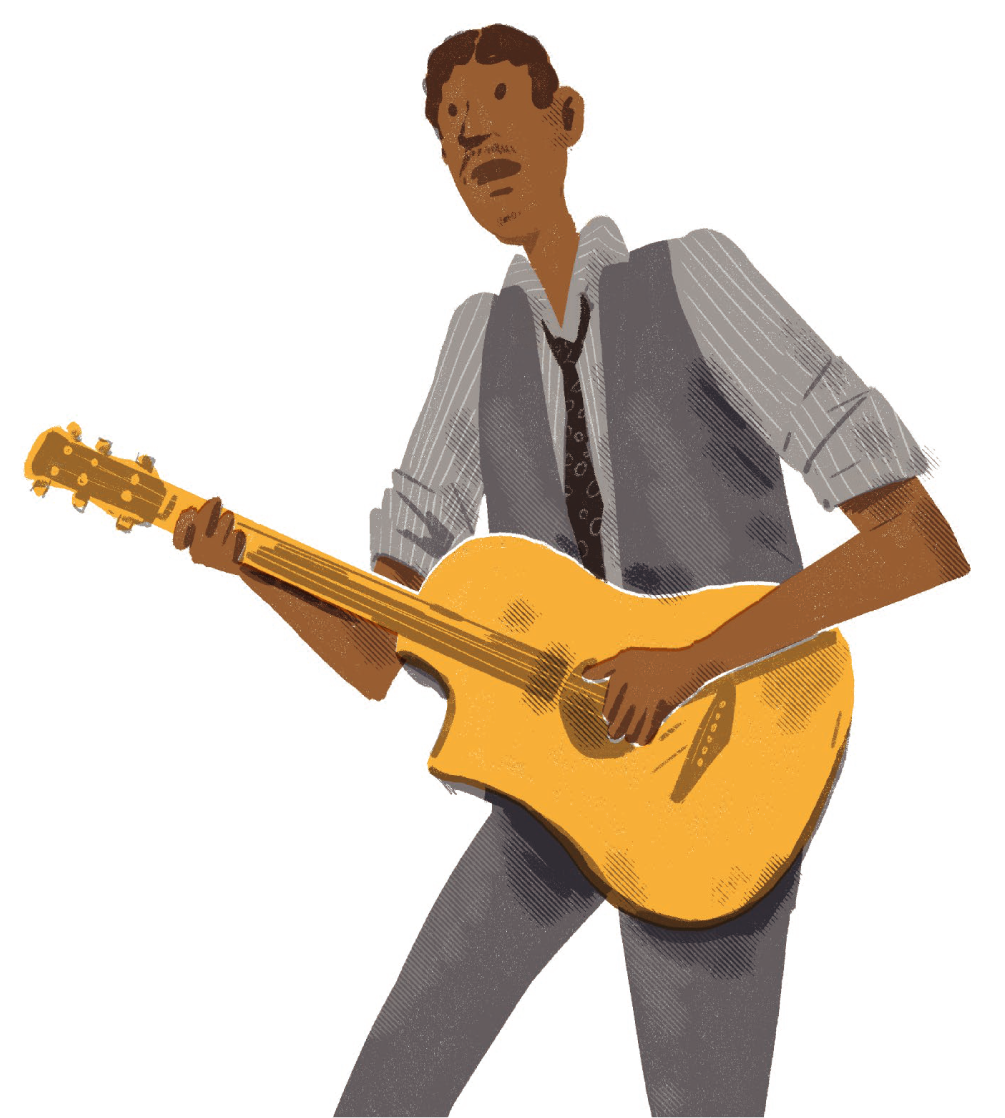Chen Chun-Pin (Professor, School of Music, Taipei National University of the Arts)
Blues is an important genre of music created by African Americans. Blues not only influenced the development of jazz and rock, its traces can also be found in the works of indigenous Taiwan musicians, such as Parangalan’s “Sky High Mountain Blues” and Dakanow’s “Abandoned Blues” style. How did this melancholy-tinted music come about? How does it relate to African cultures and African American history?
Exactly when and where blues originated is a matter of debate, but common opinion holds that blues developed in the southern United States after end of slavery in the late 19th century. In the Mississippi Delta, shouts of African American farm workers blended with narrative ballads brought by European immigrants and other music, and was cleverly fused with elements of African music, resulting in the formation of the earliest blues.
Reflecting Emotions Amid the General Climate

Many of the first blues performers were blind, who, because they were unlikely to find other employment, made a living singing in stores, clubs, and brothels. Until the 1920s and 1930s and the rise of America’s music industry, blues singers such as Blind Lemon Jefferson and Huddie William Ledbetter became household names. During the Great Depression of the 1930s, African American workers in the south were forced to relocate northward to big cities like Detroit, New York, and Chicago in search of work, as did blues performers. Arriving in the city, they added electric guitars, drums, and piano to the original guitar-centered accompaniment to form urban blues such as R&B. To delineate this change, people refer to the early blues as the country blues.
As a popular music genre, blues is inevitably subject to commercial mechanisms and the economic climate. However, blues is popular with the public precisely because it reflects everyone’s joys, sorrows, and cultural uniqueness. Country blues in particular often moves its listeners with undisguised personal emotions.
Country blues lyrics often uses a first-person perspective to address themes like break-ups, tangled relationships, alcohol and drug abuse, racism, and death. The music sounds rough at times and soft at others, with lines half-sung and half-spoken, often in falsetto. These sounds can bring intense emotions, or a multi-syllable word can be crooned to add a melancholy mood. Dramatic expression is an emotional outlet for African Americans who’ve long been oppressed by racism, and for many others who have struggled and experienced the ups and downs of city life, and has contributed to the massive popularity of the blues.
Post-transformation, a Unique Music Style
Blues is a symbol of diaspora culture. It has a hybrid quality, common in diasporas. As a music style representative of African Americans, blues inscribes the historical scars of their African ancestors being forced to America, as well as the homesickness of leaving from their rural homes to the cities. Traces of African Americans’ acceptance of European influences can be found in blues, such as the use of Western musical instruments, vocal harmony, and narrative ballads. Blues musicians transformed these elements to shape a style that sounds like no other. For example, African American musicians expanded the two-line structure based on the form of narrative ballads by repeating the first line to form the characteristic AAB structure of the blues.
In addition, blues employs Western scales while retaining the “neutral third” of traditional African music. A neutral third is the interval between the major third and minor third of the Western equal temperament scale. Blues often lowers mi, sol, and si by a semitone. When the original notes and lowered notes are alternated, an effect of dissonance is created. These are called blue notes.
The call-and-response format found in the blues can be traced back to traditional African music. A lead first sings the call line and the response singers will sing back. Although country blues is performed solo, the guitar is often used as the second voice. In other words, the blues guitar serves as both the accompaniment and the response section voice.
Through blues, African Americans demonstrate how to transform traditional culture into ethnic symbols within the cracks of powerful cultures and connect themselves with their history through the process of singing. A brief exploration into blues history may provide us with insights into why blues has been so inspirational for indigenous musicians who seek to establish ethnic identity through music.
Written on Juneteenth National Independence Day (June 19), 2021




